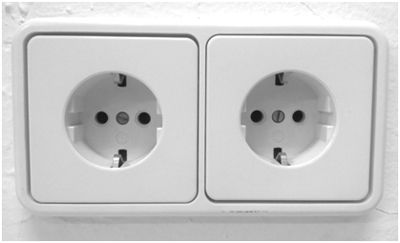Electricity generation requires the connection of a large number of alternating current generators in parallel. Before a new generator is connected to the grid, its frequency and phase must match with those of the point of connection. This fact implies that the frequency of the generated signal is identical in all those geographical locations belonging to the same regulatory body for electricity.

Another important feature of the Power Grid, as in any other electrical system is that power generated must be in constant equilibrium with power consumed. Disturbances in this balance will be offset initially by the kinetic energy of the generators connected to the system, causing a deviation of the grid frequency. This frequency is a direct measure for the rotation speed of the generators. If demand exceeds production, the frequency decreases, whereas if generation is greater than demand, the frequency increases. Since there is a limited possibility of storing excess power generated, the production system must be flexible enough to change the real-time generation levels. This makes essential a perfect cooperation between the generators, in order to share the power delivered to the system. At this point, the electrical grid frequency plays a crucial role, since it allows each generator to regulate their power output depending on the frequency deviation detected. From this point of view, frequency acts as a communication link between the different generators.
The information implicitly provided by the power grid instantaneous frequency gives rise to different signal processing applications. One of these applications is the forensic analysis of audio recordings. In certain recordings, a spurious frequency component appears, corresponding exactly to the instantaneous frequency of the mains grid. The analysis of this frequency component allows us to confirm the time of the recording and rule out any modification or deletion in it. There is another interesting application related to the information that the grid frequency provides. One of the tasks related to the concept of Smart Grid is the shaping of the demand response. Nowadays power plants vary their power output and many generators and auxiliary loads are connected or disconnected according to electricity demand. This is an extremely costly concept both in economic or environmental terms. With the unstoppable progress of the renewable energy sector, it is important to look for a load-shaping strategy. In this sense, there are several initiatives, such as Dynamic Demand, promoting the design of intermittent electrical devices capable to switch on or off at optimal moments to balance the overall system load with generation. In this technology, the power grid frequency acts as an indicator of the balance between production and demand.
One of the current lines of research of Gradiant is the study of the applications of different parameters of the electrical grid, such as its frequency, especially those related to Smart Grid.


